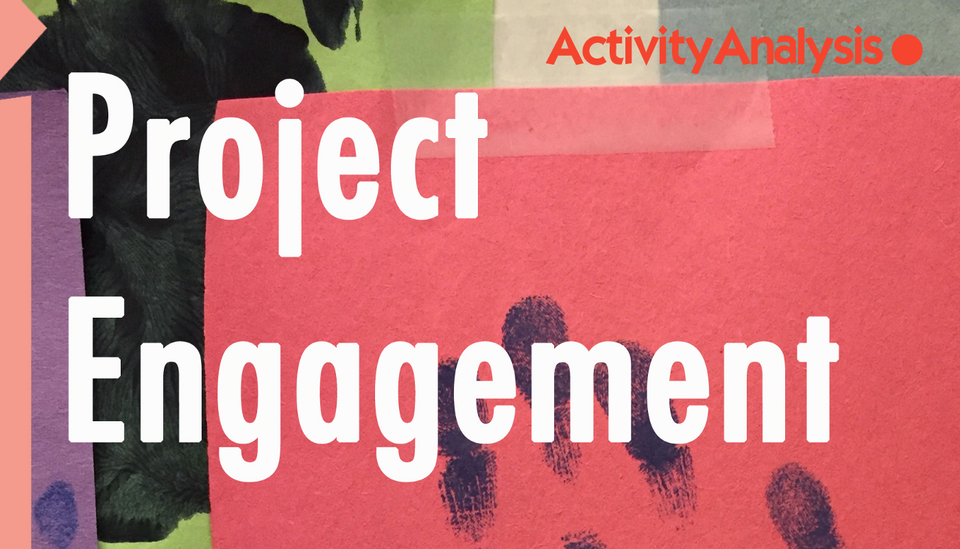Toolkit

The Project Engagement Toolkit is based on Oliver Ding's 2021 book Project-oriented Activity Theory (draft).
The Project Engagement Toolkit is a project-oriented toolkit for theory-based reflection and study. A significant aspect of the toolkit is it connects the following two theoretical approaches of Activity Theory together and offers a series tools for practitioners in the age of projectification.
- The Activity System Model (Yrjö Engeström, 1987)
- Activity as Formation of Concept (Andy Blunden, 2010, 2012, 2014)

While Engeström's model is perfect for dealing with traditional work projects, Blunden's approach considers collaborative projects as the foundation of social movements and cultural innovation.
By curating the above two approaches together, the toolkit offers a cross-boundary solution for achieving balance between individual impact and collective impact. In this way, the toolkit could lead us to an innovative way of connecting personal life themes and cultural themes in order to build a sustainable society together.

The Project Engagement Toolkit was initially developed by Oliver Ding in 2021. The above diagram is a newest version which was updated on Jan 18, 2022.
The new version of Project Engagement has the following eight modules:
- 0) Project Impact Orientation
- 1) Project as “Social Movement”
- 2) The Activity System Model
- 3) Activity as Formation of Concept
- 4) Zone of Project
- 5) Developmental Project
- 6) Creative Life as Networks of Enterprise
- 7) The “You — Project” Engagement
Highlights
#0 (Project Impact Orientation) means Attach to the toolkit. It means you have to connect your motivation and the toolkit. If you are passionate about social impact, then #3 would be the primary module for your learning journey.
#7 (The "You - Project" Engagement) means Detach from the toolkit. It means you have to engage with a real project in your daily life with a new mindset.
#1 (Project as "Social Movement") is a connector which links #2 and #3 together. This module refers to the historical development of Activity Theory. It also refers to an important method of the theory: the historical-cognitive method. Activity Theorists tend to trace the historical development of an object.
#2 (The Activity System Model) is a traditional theoretical approach for organizational activities. If your work is about team collaboration, organizational innovation, educational development, etc. This model is perfect for you.
#3 (Activity as Formation of Concept) is an newest development of Activity Theory. It considers Activity as Formation of Concepts. It is more about cultural innovation since it focuses on the development of brand new concepts.
#4 (Zone of Project) and #5 (Developmental Project Model) were developed by Oliver Ding. It is a dialogue between Activity Theory and Ecological Psychology.
#4 (Zone of Project) focuses on the internal structure of a project. However, it uses the "Ecological Zone" framework to describe two people with a shared activity.
#5 (Developmental Project Model) is about the dynamics of a project. Its core is Cultural Projection Analysis.
#6 (Creative Life as Networks of Enterprise) refers to Howard E. Gruber’s Evolving Systems Approach to the study of Creative Work (1974,1989). If you care about a creative person's career development. This module should be your favorite.
Learning Journey
Oliver Ding roughly suggests the following 3-stage learning journey for adopting the toolkit::
- Stage 1: Theory-based Reflection
- Stage 2: Practice-based Reflection
- Stage 3: Theory-Practice Dialogue
Stage 1 means understanding the Toolkit. You can compare it with other approaches or toolkits and find differences and similarities. This stage is about establishing a new world view from a new perspective.
Stage 2 means conducting a real study. You can choose a module which matches your goal and context. It doesn't have to be a perfect research project. The goal is connecting theory and practice.
Stage 3 means returning to the theoretical level and reflect on the learning journey itself. The core of this stage is about theory-practice dialogue.
This learning method is guided by a knowledge curation framework: The ECHO Way (v2.0).
Diagrams and Canvases
Oliver Ding has designed a series of diagrams and canvases for the toolkit. For example, the diagram below is for writing the book Project-oriented Activity Theory.

Books
The primary book for the toolkit is Project-oriented Activity Theory. You can find all details about the above eight modules in one 308-page book. Though the book is a draft, it is perfect for the toolkit since the toolkit was developed based on the book.

Contents
Introduction
Part 1 The Landscape of Activity Theory
Chapter 1 The Brief of Activity Theory and CHAT
Chapter 2 The Hierarchy of Human Activity
Chapter 3 The Engeström’s Triangle
Chapter 4 Typology of Activities
Part 2 Andy Blunden’s New Approach
Chapter 5 Project as "Objective of Activity"
Chapter 6 Project as a Unit of Activity
Chapter 7 Project as "Formation of Concept"
Chapter 8 A Brief of Andy Blunden's Approach
Chapter 9 Activity as Formation of Concept
Chapter 10 The Objectification of Concept
Chapter 11 The Landscape of Culture
Chapter 12 The Source of Activity
Chapter 13 A Theory of Radical Innovation
Part 3 Project Engagement
Chapter 14 Cultural Projection
Chapter 15 Projectivity
Chapter 16 Developmental Project
Chapter 17 Ecological Zone
Chapter 18 Zone of Project
Chapter 19 136 Ideas for Impact Projects
Part 4 Life as Activity
Chapter 20 The Historicality of Individuals
Chapter 21 Life as Temporal Activity Chains
Chapter 22 General Life Chains
Chapter 23 Mapping Specific Issues
Appendix 1 Knowing by Curating
Appendix 2 When Theory Meets Practice
Contact
Oliver Ding is working on developing a learning program about the toolkit. If you want to know more details about the toolkit and the learning journey. You can connect him on Linkedin.
